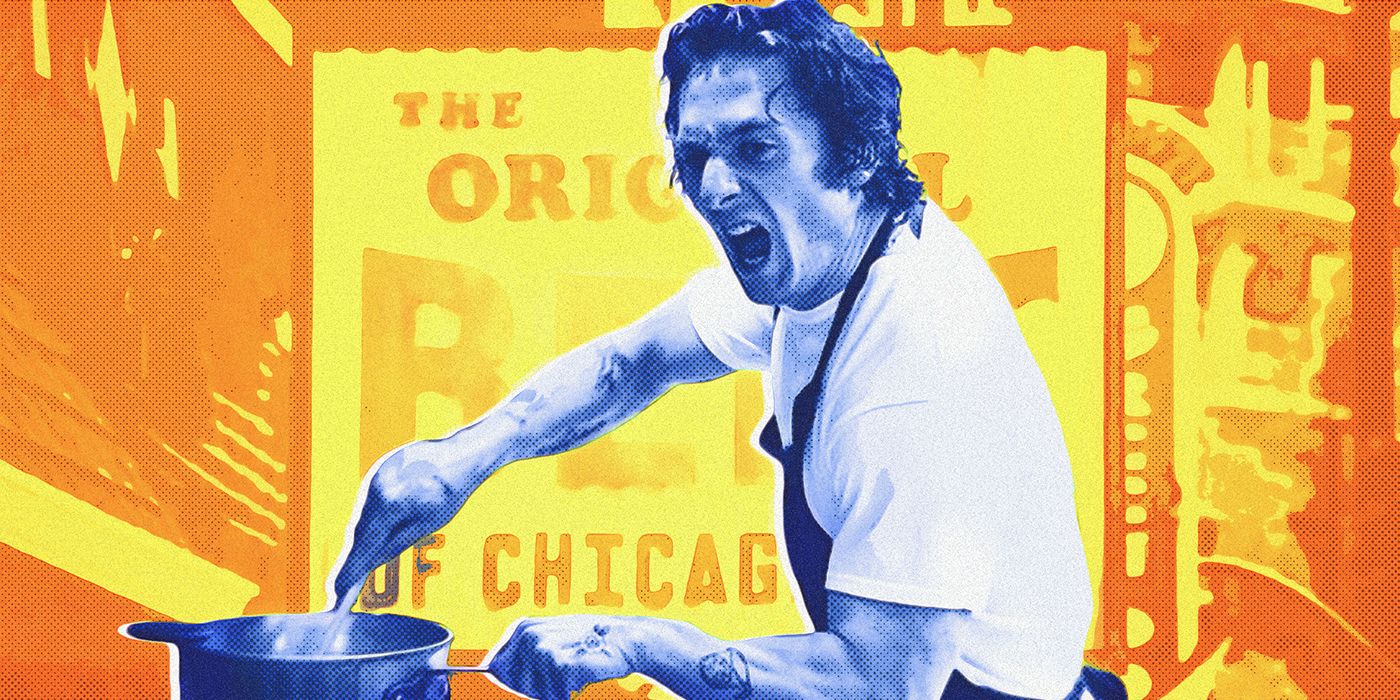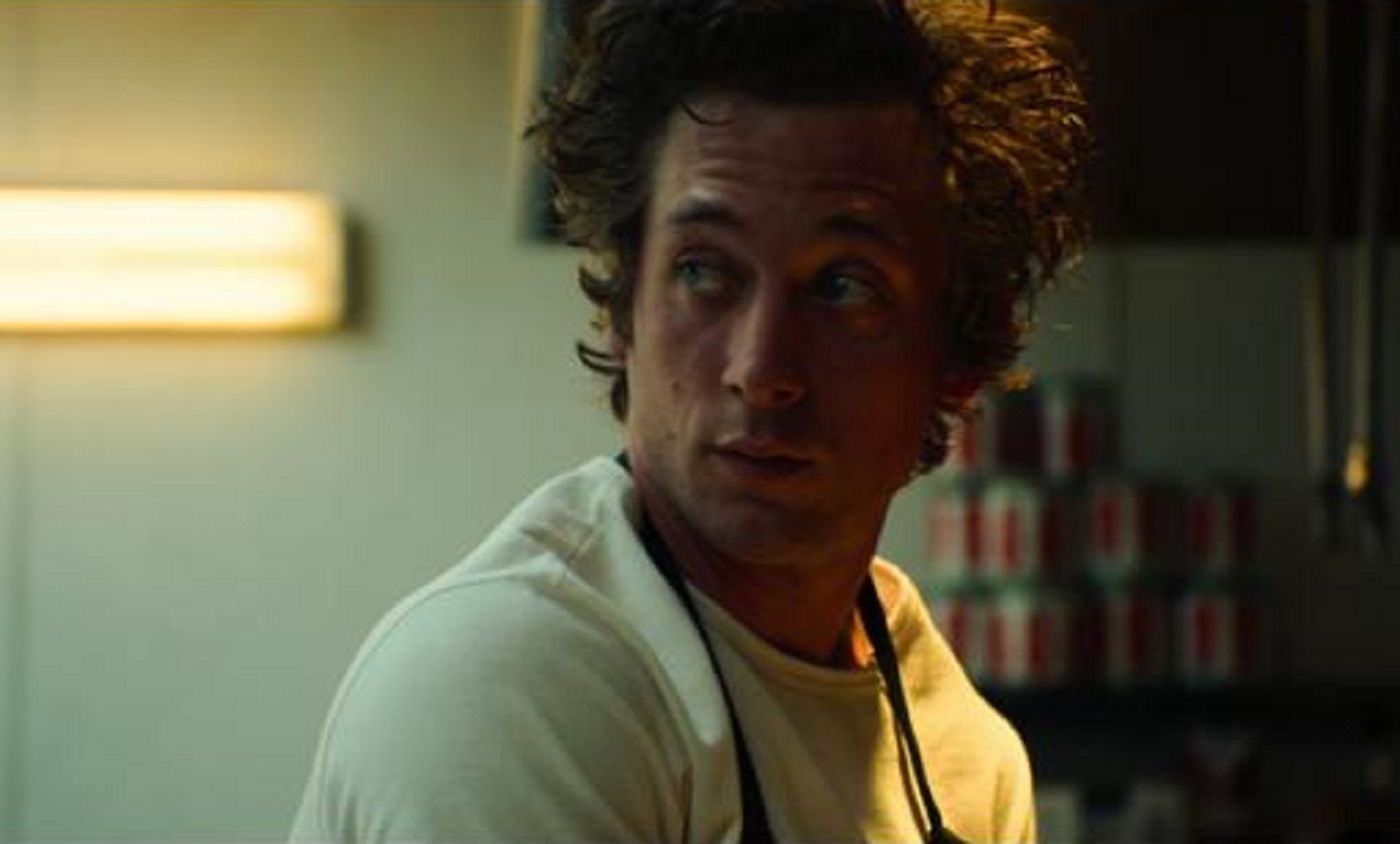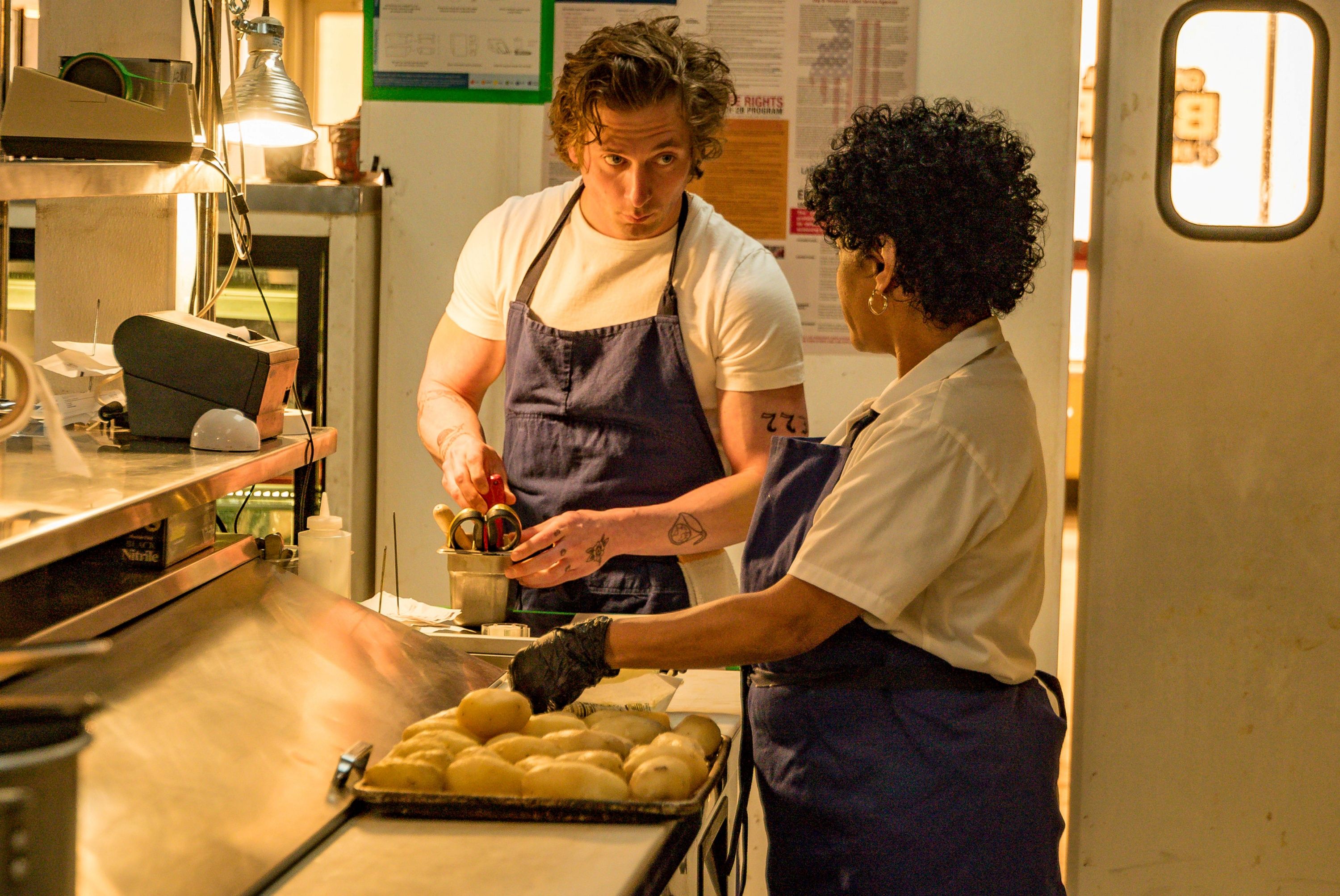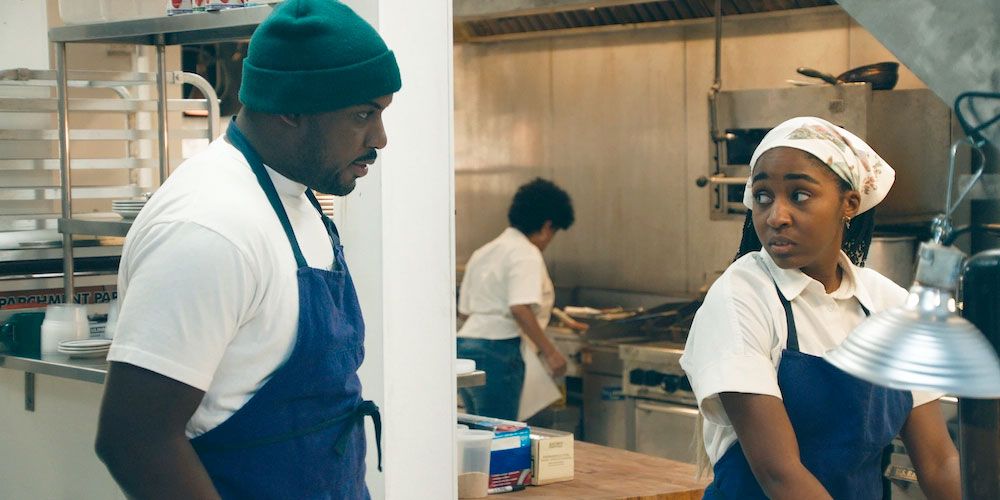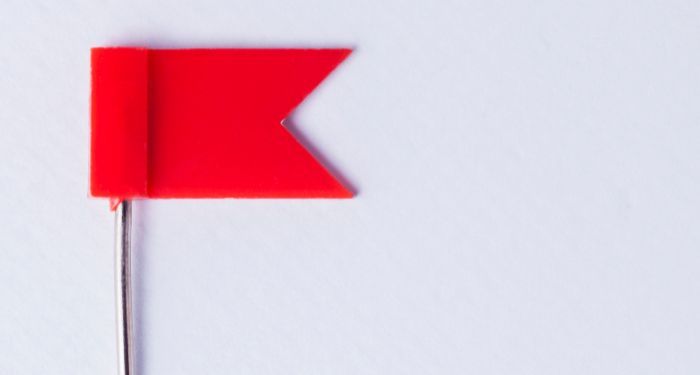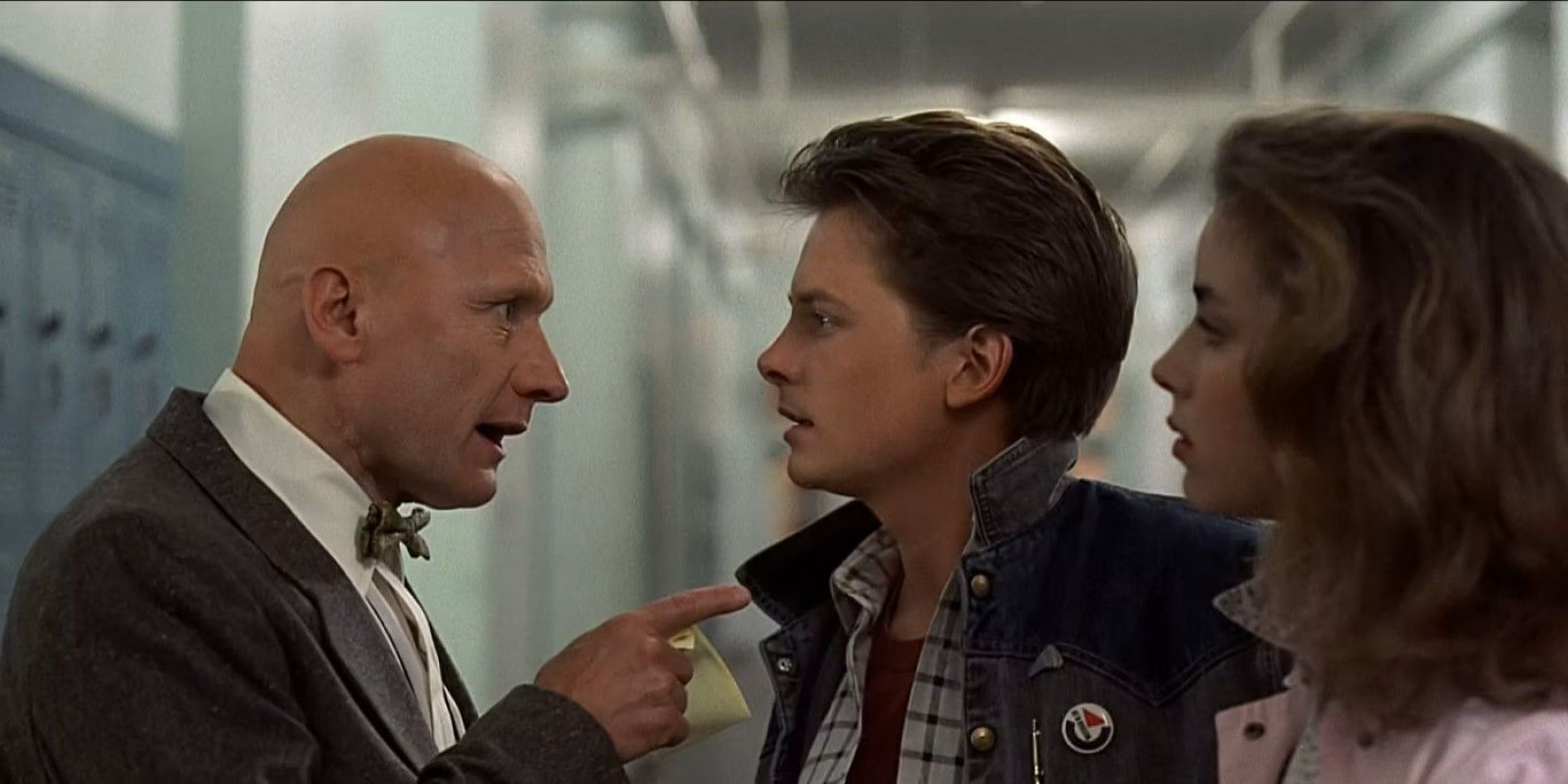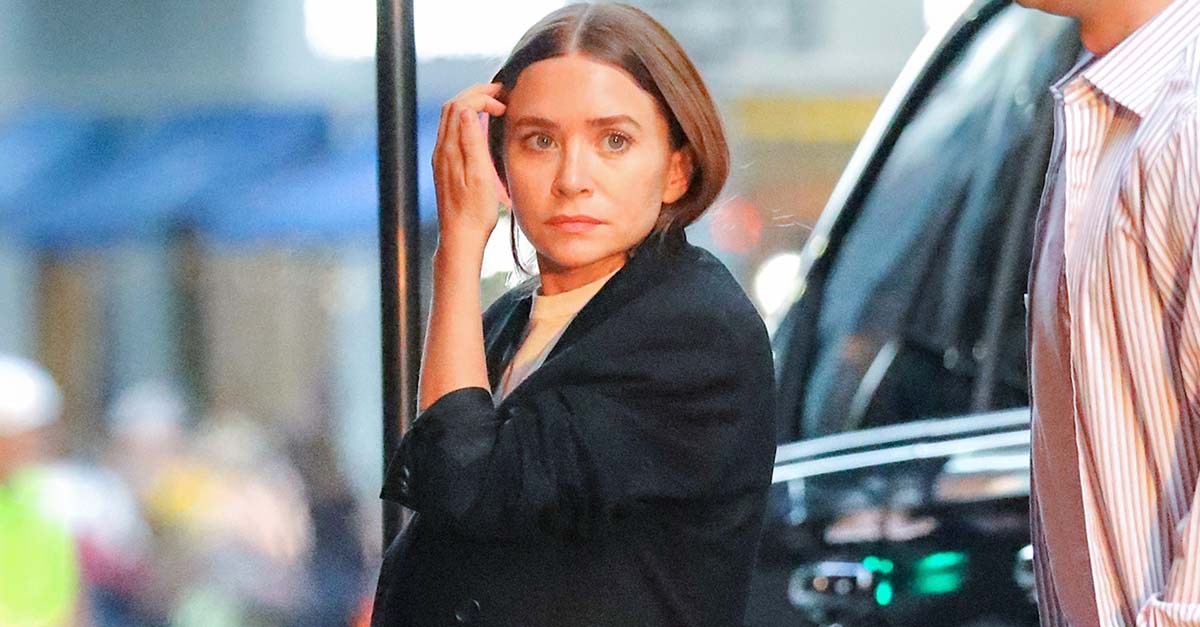FX and Hulu’s hit summer series, The Bear, created by Christopher Storer, is a hurricane of intense emotions. As young chef Carmy Berzatto (Jeremy Allen White) returns to his family’s Italian sandwich shop after spending time in the New York City fine dining world, Storer and his team use a variety of techniques to heighten both the anxiety and beauty of being a chef. Indeed, Carmy is grappling with a stubborn staff, a painful family history, and his own trauma while focusing on the survival of the restaurant. However, as the series progresses, and as the inner lives of other characters are slowly revealed, the pure love and joy of cooking is illustrated as well, resulting in a well-rounded view of this unique profession.
The opening sequence of the series is a masterclass in building tension and anxiety through a use of carefully crafted sound design by composer Jeffery Qaiyum. In a surreal opening shot, Carmy slowly approaches a bear on a bridge. Everything around him is nearly dead silent except for ambient noise of the streets as he slowly walks towards the growling animal. Suddenly, Carmy abruptly wakes up from the dream in the restaurant, and the fast, opening notes of a heavy metal song starts playing. This sharp contrast between silence and then an intense guitar riff sets the tone for Carmy’s new routine in the restaurant: it’s fast, it’s intense, and it’s anxiety-inducing. Carmy clearly doesn’t have a moment of peace while he begins his day, as Storer suddenly ramps up the tension through sound.
The intensity of the opening doesn’t cease as Carmy sits in his office and talks on the phone with someone regarding the restaurant business, which Qaiyum layers with sounds of a vintage arcade game in the background. As Carmy tries to play everything off as though he’s keeping the restaurant afloat since the passing of his brother, the sound of the arcade game “dying” plays subtly. When Carmy gets off the phone, the kitschy game sound is heard again. By creating parallels between these sound effects and the emotional moments in Carmy’s dialogue, Storer makes it feel as though Carmy’s sanity has a countdown. This makes the opening even more tense as it becomes clear that Carmy must push past these emotions and push through his work day. A blend of trumpets and guitar in the background play out as Carmy sprints around town simultaneously trying to make a sale with his used denim and prepare sandwiches for the kitchen. The music suddenly becomes an unnerving mix of triumphant and chaotic. It’s clearly the adrenaline that keeps Carmy going, but at the same time, he’s weighed down by his traumatic past. This combination of sounds perfectly reflects both the anxiety and excitement in Carmy’s work day.
While the pilot of the series reflects the anxiety of the restaurant world through sound design, later episodes also do this through a brilliant use of unique camera movements. When health inspector Nancy Chore (Amy Morton) arrives to give the restaurant an assessment based on their code violations, Carmy desperately attempts to reason with both his staff and Nancy. Storer and cinematographer Andrew Wehde manage to make the entire scene, which is only about three minutes long, feel like a panic attack.
As soon as Nancy gives the rundown of their list of violations, the diligent new sous-chef Sydney (Ayo Edebiri) and stubborn, longtime cook Richie (Ebon Moss-Bachrach) begin to shout and speak over each other. Suddenly, Wehde moves closer with the camera, making the entire conversation feel abruptly claustrophobic. As staff members begin shouting at each other, Storer whip pans between them, no longer using steady, measured movements. The camera becomes dizzying in its rapid, messy shots as Richie and Carmy get into a nearly violent fight over the grade from Nancy. When Richie leaves, Carmy looks down at the “C” graded paper on the floor, a marker of the restaurant’s slow descent. As he picks it up and stares at it, the camera goes in and out of focus, reflecting the sheer mess of his state of mind as he tries to hold everything together. Wehde’s mix of whip pans, quick cuts, and closeup shots make this an extremely anxiety-inducing part of the episode to heighten the difficult reality of maintaining a restaurant. Moreover, the scene is brilliant because it encapsulates the turbulence of Carmy’s world as he struggles to stop his familial dysfunction from seeping into the restaurant’s status.
Despite the amount of anxiety that Storer illustrates in the restaurant world, he also conversely shows the beauty that lies underneath it all through his use of editing. In some of the most unexpected moments, the distinct cutting choices from editors Joanna Naugle and Adam Epstein heighten the idea that food and cooking are not just an anxiety-inducing part of the job. Instead, they’re a source of sheer joy for many of the staff members.
Later on in the season, there’s a sequence where Sydney prepares the food for the day. As the clock ticks, she peels carrots, sears beef, and chops vegetables. While the loud sound of the clock continues, creating a sense of anxiety, it’s Storer’s gentle, poetic use of crossfades that illustrate Sydney’s sense of peace and serenity as she cooks. Later on, Sydney rushes around the restaurant, dealing with hostile and frustrated staff members. Tina (Liza Colón-Zayas) in particular expresses intense animosity towards her. Sydney is overwhelmed, but then begins chopping onions by herself at her station. Storer and the editors cut together a beautiful sequence of her chopping, layered with crossfades that create a vignette around her and the food, combined with light, calming music in the background. The contrast between this and the previous scene of her fighting with her coworkers makes this scene feel even more peaceful. The distinct use of editing in this sequence shows audiences that for Sydney, cooking in the restaurant world is a beautiful escape.
Similarly, Storer uses this technique to reflect Marcus’s growing passion for baking. The opening of a later episode displays a stunningly cut together montage of a batch of donuts being made. The montage is slow and ethereal as it’s layered with a soft, acoustic track. Marcus looks through a window at a tray of donuts, completely in awe. Indeed, Marcus’s character reflects the beauty of the restaurant world, as he sees the food that he and fellow chefs make as complete works of art. In a later moment of the episode, Tina and Sydney get into an argument, where the tension between them continues to bubble. The immediate next sequence is of Marcus frosting a cake. Everything around him is dead quiet, except for the sounds of the sugar spilling and the whisk moving around the bowl. Similarly to Sydney with her cooking, Marcus finds freedom from the tension of his coworkers with his baking.
While the series portrays the deeply difficult realities of this world, Storer also shows the purest form of love that comes from cooking. Throughout the series, Storer cements a clear dichotomy that underscores the show: the beauty of preparing food often clashes with the anxiety of working in a restaurant. It’s been an emotional journey watching Carmy and his staff evolve over the episodes, and it’ll be exciting to see what’s in store when The Bear returns.























































![Social Media Spring Cleaning [Infographic] Social Media Spring Cleaning [Infographic]](https://imgproxy.divecdn.com/9e7sW3TubFHM00yvXe5zvvbhAVriJiGqS8xmVFLPC6s/g:ce/rs:fit:770:435/Z3M6Ly9kaXZlc2l0ZS1zdG9yYWdlL2RpdmVpbWFnZS9zb2NpYWxfc3ByaW5nX2NsZWFuaW5nMi5wbmc=.webp)
![5 Ways to Improve Your LinkedIn Marketing Efforts in 2025 [Infographic] 5 Ways to Improve Your LinkedIn Marketing Efforts in 2025 [Infographic]](https://imgproxy.divecdn.com/Hv-m77iIkXSAtB3IEwA3XAuouMwkZApIeDGDnLy5Yhs/g:ce/rs:fit:770:435/Z3M6Ly9kaXZlc2l0ZS1zdG9yYWdlL2RpdmVpbWFnZS9saW5rZWRpbl9zdHJhdGVneV9pbmZvMi5wbmc=.webp)




